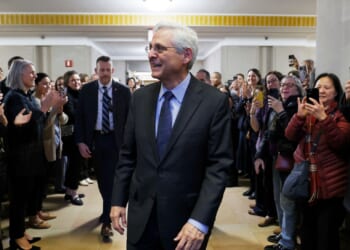Cllr Kay Mason Billig is the Leader of Norfolk County Council.
Norfolk is the fourth largest county in England at over 2,000 square miles. With a population of approximately 930,000 people, it is one of the most sparsely populated areas in the country, despite being less than 90 miles from London (an hour and 40 minutes by train). We have often felt overlooked when it comes to infrastructure improvements (we don’t have a single motorway) and economic development opportunities (no heavy industry here), but that has also helped preserve our rural outlook and our quality of life. People who discover the joys of Norfolk often choose to stay.
Norfolk County Council is a big beast, with over 8,000 employees and a turnover of circa £2 billion. We have 84 councillors who represent some very diverse communities – from inner city Norwich, to coastal towns, to the Broads, the Brecks, and the fens. It makes for interesting dynamics when delivering services across such a large landscape. For example, our home-to-school transport cost is now approaching £70 million a year, that’s a lot of buses and taxis!
Aside from essential social services and highways maintenance (we are number one for fixing potholes), we are very proud of our smaller services such as Libraries and Museums. We operate 47 static libraries and three mobile ones, using these bases for community outreach as well as traditional library uses. Our 10 museums are second to none, with the refurbished Norwich Castle Keep coming on stream this summer at a cost of over £27 million. Here, visitors will be able to experience what life was like for Henry I when he stayed in his royal palace for Christmas in 1121. We have a proud and illustrious heritage, being England’s second city behind London until the 18th century – but it’s the future of Norfolk which is uppermost in our minds at present.
Having managed to dodge the reorganisation bullet previously, Norfolk continued to have a two-tier system with seven districts and one county council delivering services across our area. All this is now set to change, with the government insisting that Local Government Reorganisation is coming to all remaining two-tier areas.
This brings questions to us here at County Hall of what a new structure should look like, and how we make it fit for the next 50 years plus? We have taken a lot of advice, looked at other areas that have reorganised to learn their lessons, and engaged with our residents to ask what is important to them. We have crunched the numbers for value for money and considered delivery models to ensure continuity of services. The conclusion we have come to is that the only sensible option for Norfolk is to have one single unitary authority which covers the whole county.
As 85 per cent of all local government services in Norfolk are already provided by the County Council, it makes sense to bring on board the other 15 per cent currently delivered by the districts, rather than try to work it the other way around. This will allow us to streamline the delivery of all services using economies of scale, enable us to withstand any future financial shocks, and ensure fairness of delivery so there will be no post code lottery. Wealthier areas can help to support poorer ones, and all our residents will get a fair deal in service delivery and harmonised council tax rates. It also gives us the opportunity to look at local representation in a new way, to ensure that people have more say in what happens in their local area, to bring decision making down from the council to local town and parish councils and area boards. We will be redesigning the whole system to cater for the differences in demographics, economics, and the appetite for devolved powers down to the most local level possible.
Aside from this, earlier this year both Norfolk and Suffolk were given Devolution Priority Program status. So next May, we will be looking to elect a Mayor for our region. This will give us a seat at the table of regional Mayors. We are already talking to the Minister about the differences between the priorities for a rural Mayor over the metro Mayor model that we are all used to. Norfolk County Council will be a constituent part of the Mayoral County Combined Authority with voting rights (until we are replaced by a unitary), so we have a big part to play in setting it up so that our Mayor can deliver early on the priorities for our two counties.
It’s all change, but we relish the challenge. Having been overlooked for too long, Norfolk is now going to show just what we can do. We are already world leaders in agri-tech and bio science, we have 90 per cent of the offshore wind industry off our coastline. We are a net contributor to the UK GVA. We will be working towards a bright future in green technology, in hydrogen production, not forgetting our agricultural roots and booming tourist industry. Come visit us – you won’t want to leave.




![Man Arrested After Screaming at Senators During Big Beautiful Bill Debate [WATCH]](https://www.right2024.com/wp-content/uploads/2025/06/Man-Arrested-After-Screaming-at-Senators-During-Big-Beautiful-Bill-350x250.jpg)












